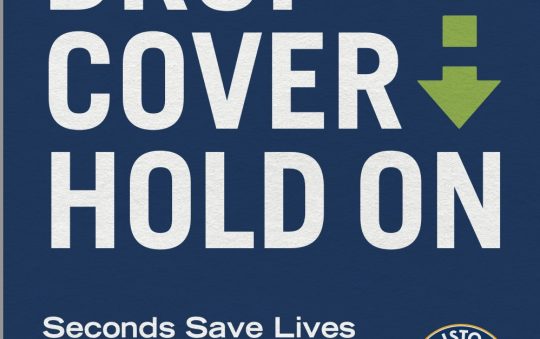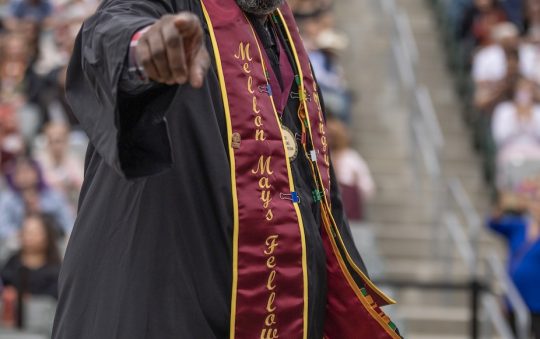
Most colleges and universities are pleased by media attention for what they have accomplished. One local institution may be getting some attention for what it has not accomplished in terms of the safety of its faculty and students, according to a few university professors.
California State University, Northridge (CSUN) professor of Africana Studies, Karin Stanford says she was the target of threats and harassment last year by White supremacists and Donald Trump supporters because of a question on a final exam she gave to students in her class. An article on the issue appeared online on Campus Reform, a conservative website that claims it exposes “liberal bias” on college campuses.
Commenters on the article spewed racist vitriol at Stanford, including re-posting her university office address and saying she should be shot in the face.
Stanford went out on sick leave after the incident, concerned for her safety and that of her students, because she says the university did nothing to address her safety concerns.
“The university only met with me around this issue after my union representative forced them too,” said Stanford via phone. “And to date, they still have not told me what their plan is regarding safety for myself and my students in order for me to return to teaching on campus.”
Aimee Glocke, an associate professor of Africana Studies at CSUN, says she is not surprised at the university’s lack of zeal to protect its populace. “In 2013, I had a student at CSUN threaten to kill me. The CSUN police department launched an investigation immediately, but CSUN administration did not take it seriously,” she stated to the Sentinel via e-mail.
“In fact, I was only placed under police protection on campus after my department chair demanded it. Since then, I have also had ‘N*****’ and ‘F*** You’ written on my car on two separate occasions, and no student was ever prosecuted for it. This is why I know firsthand that CSUN administration is slow to act on incidents of White supremacy and racism on our campus, especially when it involves the safety of the faculty.”
Professor James Simmons, also in CSUN’s African Studies department, says that what is currently happening on campus – inaction by university officials – is “nearly identical to the situation recently faced by Democratic analyst, Rochelle Ritchie, who received threatening tweets from alleged serial bomber, Cesar Sayoc last month.”
In a letter to the Daily Sundial, CSUN’s student newspaper, Simmons requested the paper investigate the allegations of professors regarding their lack of safety. According to Simmons, in the case of alleged bomber Sayoc, “Twitter took no action to address the threats, initially saying that Sayoc’s veiled threats to kidnap and kill Ritchie did not violate its policy against threatening posts. The tweets were deleted by Twitter only after Sayoc’s arrest for sending over a dozen parcel bombs to those he perceived to be critics of President Trump.”
Stanford noted that the university’s response to recent mass shooting incidents in the U.S. was more developed than the response she received.
Ian David Long is the man police say is responsible for the most recent mass shooting in Thousand Oaks, California, on Nov. 7, in which 12 people died, including the 28-year-old Long. Long, a former CSUN student, targeted a bar that was frequented by other college students.
Stephen Paddock is also a former CSUN student, having graduated in 1977. The 64-year-old Paddock killed 58 people and wounded more than 500 others when he opened fire at a country music concert in Las Vegas, Nevada, in October of last year.
The university’s response to both mass shootings was to cooperate with police in releasing both its former student’s information and sending campus wide e-mails to students and staff.
“ … our hearts, thoughts and sympathies are with the victims, survivors, first responders and loved ones impacted by the horrific mass shooting that occurred in Las Vegas,” wrote CSUN president Dianne F. Harrison after both Paddock’s 2017 massacre and Long’s Thousand Oaks shooting spree.
In 2017, Harrison alerted the campus community that workshops on “workplace violence/surviving an active shooter incident” and “maintaining a proactive approach to personal safety” would be held. After Long’s shooting Harrison asked that campus “faculty and supervisors be supportive and considerate of anyone who has been touched by this tragedy,” and that university counseling services were available for those that need it.
While police say they have not determined a motive for Long’s actions in Thousand Oaks, both Long and Paddock were White men. In other words, part of the demographic that is responsible for the majority of terror attacks and mass shootings on U.S. soil; more than any immigrants, Muslims or what the FBI has labeled “Black Identity Extremists.”
That demographic is also responsible for the threats and harassment of numerous other college and university professors in other parts of the country as well. George Ciccariello-Maher, formerly of Drexel University; Keenaga Yamahtta-Taylor of Princeton; Trinity College’s Johnny Williams; Prairie View A&M’s Tommy Curry; University of Memphis professor Zandria Robinson and Boston University’s Saida Grundy have all faced harassment, threats of physical violence and threats to their employment by white racists/Trump supporters.
Most recently, professor Christine Blasey Ford, the woman who accused current Supreme Court Justice Brett Kavanaugh of sexual assault, has had to move four times and pay for a private security detail to keep her and her family safe. She has not been able to return to her job at Stanford University.
In Dr. Stanford’s case, none of the university administrators spoke to her regarding the online harassment or issued a statement of support, even months later when stalking online commentators sought to find out when she would return to class.
Out of concern for herself and students, Stanford had been utilizing her sick leave and requested online teaching assignments so she will not have to be present on campus.
Now that her sick time has run its course, Stanford will eventually return to class. She told the Sentinel, “All I can do is hope that the online threats remain online” since, in her words, the university apparently has no plan to keep her or its students safe in these types of situations.
In response to the aforementioned mass shootings, while CSUN president Harrison’s actions still fall short of a safety plan, Stanford says the university response was still more substantive than what she got.
“The university had an opportunity with my case, long before this latest incident, to develop a response that shows their concern and value for the safety and lives of faculty, staff and students,” said Stanford. “And they have failed.”
Calls to the office of CSUN president Harrison were not returned by press time.







